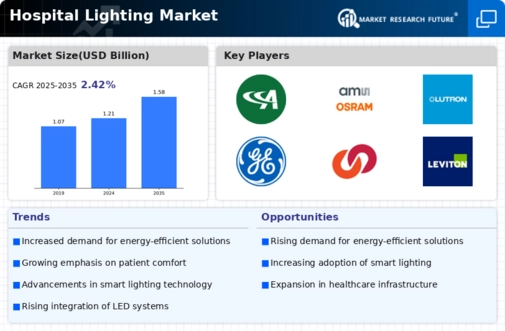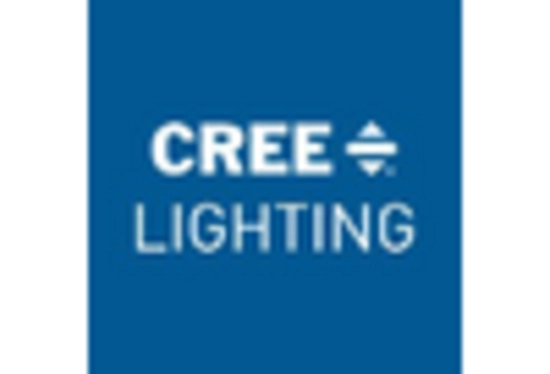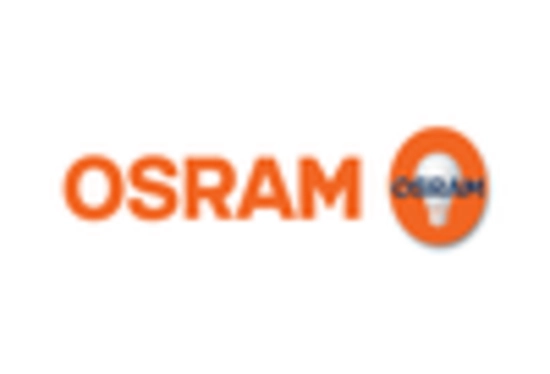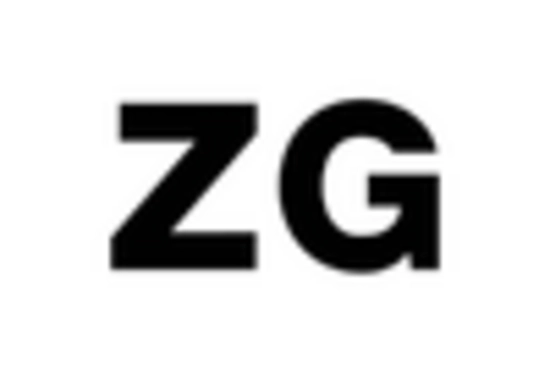Regulatory Standards and Compliance
The Hospital Lighting Market is also shaped by stringent regulatory standards and compliance requirements. Various health organizations and government bodies have established guidelines to ensure that hospital lighting meets specific safety and quality criteria. For instance, the Illuminating Engineering Society provides recommendations on lighting levels for different areas within healthcare facilities. Compliance with these standards is essential for hospitals to maintain accreditation and ensure patient safety. As hospitals strive to meet these regulations, there is a growing demand for lighting solutions that not only comply with these standards but also enhance operational efficiency. This regulatory landscape is likely to drive innovation and investment in the hospital lighting sector.
Increased Focus on Patient Well-being
The Hospital Lighting Market is significantly influenced by the increasing emphasis on patient well-being. Research suggests that appropriate lighting can positively impact patient recovery times and overall satisfaction. Hospitals are now prioritizing the creation of healing environments, which includes the strategic use of lighting to reduce stress and anxiety among patients. For example, studies indicate that exposure to natural light can enhance mood and promote better sleep patterns. As a result, healthcare facilities are investing in lighting designs that mimic natural daylight, thereby improving the patient experience. This focus on well-being is likely to propel the demand for innovative lighting solutions tailored to enhance the therapeutic environment in hospitals.
Sustainability Initiatives in Healthcare
The Hospital Lighting Market is increasingly influenced by sustainability initiatives within the healthcare sector. Hospitals are recognizing the importance of reducing their carbon footprint and are actively seeking energy-efficient lighting solutions. The adoption of LED lighting, which has a longer lifespan and lower energy consumption, aligns with these sustainability goals. Reports indicate that hospitals can reduce their energy costs by up to 50% by switching to energy-efficient lighting systems. Additionally, the push for sustainable practices is prompting hospitals to consider the environmental impact of their lighting choices. This trend towards sustainability is likely to drive the demand for innovative lighting solutions that are both eco-friendly and cost-effective.
Growing Investment in Healthcare Infrastructure
The Hospital Lighting Market is benefiting from the growing investment in healthcare infrastructure. As governments and private entities allocate more resources to enhance healthcare facilities, there is a corresponding increase in the demand for advanced lighting solutions. New hospital constructions and renovations often prioritize modern lighting technologies that improve energy efficiency and patient comfort. For instance, the expansion of healthcare facilities in emerging markets is creating opportunities for innovative lighting solutions that cater to diverse needs. This influx of investment is expected to stimulate growth in the hospital lighting sector, as facilities seek to implement state-of-the-art lighting systems that enhance operational efficiency and patient care.
Technological Advancements in Lighting Solutions
The Hospital Lighting Market is experiencing a notable shift due to rapid technological advancements. Innovations such as LED technology and smart lighting systems are becoming increasingly prevalent. These advancements not only enhance the quality of light but also improve energy efficiency, which is crucial in hospital settings. For instance, LED lights consume up to 75% less energy than traditional incandescent bulbs, leading to significant cost savings for healthcare facilities. Furthermore, the integration of IoT in lighting systems allows for real-time monitoring and control, optimizing the lighting environment for both patients and staff. This trend indicates a growing preference for modern lighting solutions that can adapt to various hospital needs, thereby driving the market forward.

















Leave a Comment